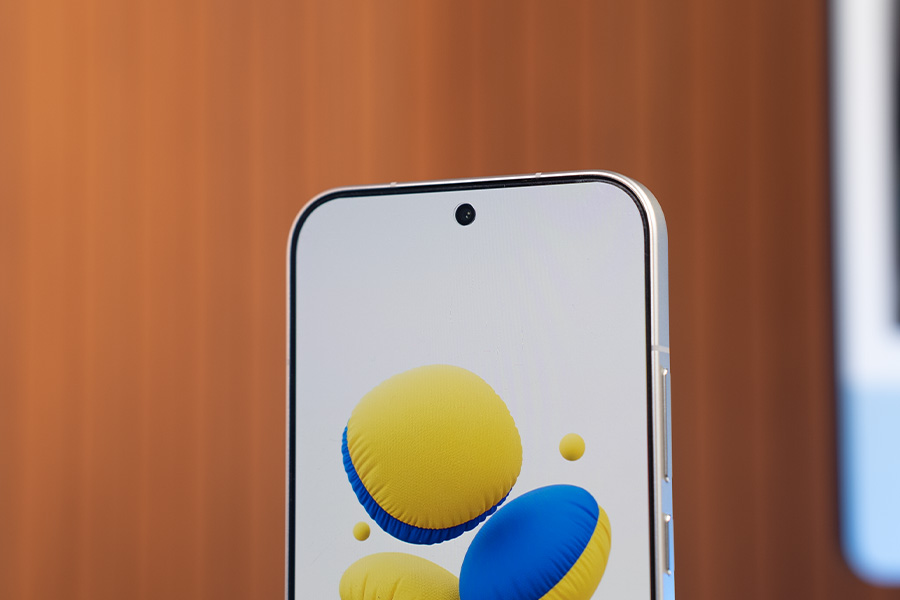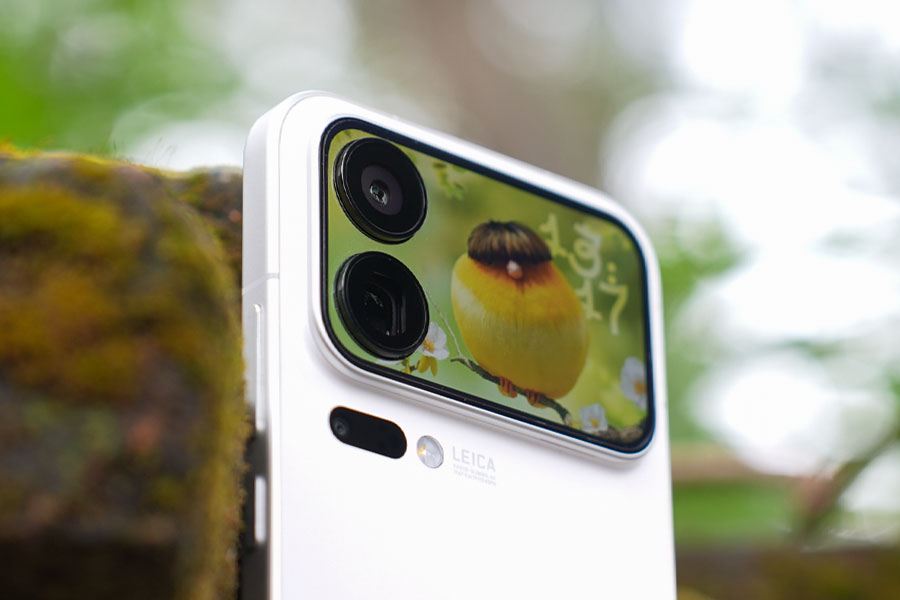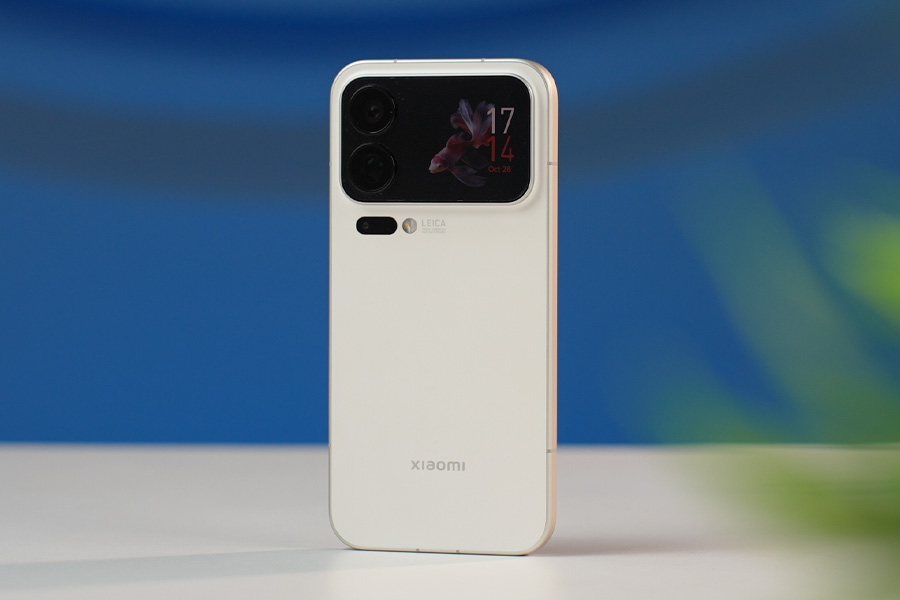
You know how everyone calls Xiaomi the “Apple of China”? Well… this year, they’ve decided to prove it literally. Xiaomi completely skipped the 16 series and jumped straight to the Xiaomi 17 lineup, mirroring Apple’s iPhone naming exactly. We’ve got the Xiaomi 17, the 17 Pro, and of course the 17 Pro Max. Now, you would think copying Apple’s name would be a bad look, right? Now, over the past few years, I’ve tested almost all the Chinese flagship phones, and I have noticed that Xiaomi’s premium lineup has been heading in the right direction.
The 15 Ultra, the 14 Ultra… those were solid devices, and this one definitely builds on that progress. But, at the same time, I feel Xiaomi still has a few key things to fix if they really want to compete directly with Apple or Samsung and even Vivo or OPPO! Let’s find more in our Xiaomi 17 Pro Max review.
But before heading in, let’s take a quick look at its official specifications.
Xiaomi 17 Pro Max Specifications
- Design, Build:
- 162.9 x 77.6 x 8 mm, 219gm
- Dragon Crystal Glass 3
- Black, Cold Smoke Purple, Forest Green, White
- Display:
- 6.9-inch M10 LTPO AMOLED primary (12-bit color, 1-120Hz variable, 3,500 nits peak),
- 2.9-inch secondary display (976 × 596 px, 120Hz, 3,500 nits, DC dimming)
- Chipset:
- Qualcomm Snapdragon 8 Elite Gen 5 (3nm)
- Adreno 840 GPU
- 5,533mm² vapor chamber cooling
- Memory: 12GB/16GB LPDDR5X RAM, 512GB/1TB UFS 4.1 storage
- Software & UI: Android 16-based HyperOS 3, HyperIsland, Hyper XiaoAi assistant
- Rear Camera:
- 50MP Light Fusion 950L main (1/1.28″, f/1.67 Leica Summilux, OIS, LOFIC HDR),
- 50MP Samsung ISOCELL GN8 telephoto (1/2″, f/2.6, 5x zoom, OIS, 30cm macro),
- 50MP OmniVision OV50M ultrawide (102° FoV), 3D ToF sensor
- Front Camera: 50MP OmniVision OV50M (f/2.2, 90° FoV)
- Security: In-display Ultrasonic fingerprint sensor
- Connectivity: Wi-Fi 7, Bluetooth, 5G, GPS, NFC, USB Type-C, UWB
- Durability: IP68 rated (up to 6m fresh water submersion)
- Battery: 7,500mAh L-shaped silicon-carbon battery, 100W HyperCharge wired, 50W wireless, 22.5W reverse charging, Surge G2 management chip (80% capacity after 2,000 cycles)
Design and Display
Okay, let me start with the positives and right at the top of that list has to be the design.
I’m 100% sure that a lot of other companies are going to copy this look in the next few months.
This secondary OLED display on the back – it’s unique and actually useful. You can add widgets, control your Spotify playlist, show notifications, and even customize what appears on it. Now, this is the Chinese variant, so it’s a bit limited in terms of supported apps, but I’m pretty confident the global version will have more integrations!
The best part, of course, is that I can use the rear display as a viewfinder. That means I can shoot selfie photos and videos using the rear cameras, which makes a huge difference in quality. The video and photo output from those main sensors absolutely crushes what you get from the front camera.
What’s even cooler is that Xiaomi also sells a unique accessory case. It basically turns this phone into a retro handheld console. You can play classic retro and brick games right from that rear display! And despite having this big secondary screen, the Xiaomi 17 Pro Max still feels balanced and premium. That’s something a lot of Chinese flagships actually struggle with; they tend to feel top-heavy.
But Xiaomi has nailed the weight distribution this time. It feels solid in the hand, it’s not bulky or uncomfortable. And this flat design also adds to that clean, modern look.
And BTW, the back is actually made of plastic and not glass and probably that’s the reason it’s not that heavy.
Some Nitpicking
Now, if I had to nitpick, I do have one complaint about the design. Because of that secondary display, Xiaomi had to reposition the ultra-wide camera and unfortunately, it’s a really small sensor.

So the quality sadly just doesn’t hold up to flagship standards. I’ll talk more about that in the camera section later. But overall, this is a beautiful, unique design that actually feels practical and not just a gimmick. I have a feeling a lot of other brands are going to follow this idea very soon.
Display
Ok.. Another thing I really like about the Xiaomi 17 Pro Max is the display. Xiaomi claims they’re using a new AMOLED M10 display panel, which supposedly delivers “better efficiency, ultra-high brightness, and lower power consumption.” and honestly, this panel looks fantastic. The clarity and sharpness are the best I’ve seen on any Xiaomi device so far. In fact, I would say it even looks crisper than the display of the iPhone 17 Pro Max.

It also gets extremely bright outdoors, but it also dims beautifully at night, so it never feels harsh on your eyes. The touch response is incredibly smooth, and the color accuracy is top-tier. You also get full support for Dolby Vision and HDR 10/10+ standards, and Xiaomi has also stepped up the vibration feedback and speakers this time. The haptic motor feels tight and precise… very flagship-level, and the stereo speakers are punchy and clear.
Xiaomi also uses something called Dragon Crystal Glass. And if you watch Jerry Rig Everything’s video, it shows that this new Glass has better scratch resistance than Gorilla Glass Victus 2 and Gorilla Glass Armor – making it actually tougher than what we see on most Android phones today. However, it still doesn’t quite match the durability of Apple’s new Ceramic Shield. But this is still a promising development from Xiaomi!
Performance
As for the performance, this is the first phone to feature Qualcomm’s brand-new Snapdragon 8 Gen 5 Elite chipset – Qualcomm’s latest and most powerful processor. And when I compared it to Apple’s A19 Pro, the Snapdragon 8 Gen 5 Elite actually comes out ahead in most benchmarks, especially in GPU performance, where it delivers some impressive results.

Apple still holds a slight edge in single-core CPU performance, but overall, this new Snapdragon chip is incredibly fast and efficient. Xiaomi has also done a nice job optimizing HyperOS 3.0. The interface now feels noticeably smoother and cleaner than before, with more fluid animations and better responsiveness across the board.
That said, I think software remains Xiaomi’s Achilles’ heel. While HyperOS has come a long way, it still doesn’t quite match the refinement of Vivo’s OriginOS or OPPO’s latest ColorOS 16, and ofc ourse Samsung’s One UI in terms of polish and consistency.
Still, performance-wise, the phone is snappy, responsive, and handles heavy multitasking or gaming without breaking a sweat. Thermals are also well-managed. I didn’t experience any major heating issues, thanks to Xiaomi using a large vapor chamber cooling system here.
Battery
Another thing I am really excited to see across all Chinese flagship phones lately is the huge jump in battery capacities. They have now gone from already massive 5,500 or 6,000 mAh packs to even massive batteries now!

The new Xiaomi 17 Pro Max has a 7,500 mAh silicon–carbon battery.. Yes 7500mAh, which is seriously impressive. I ran endurance tests side by side with the iPhone 17 Pro Max, and under heavy use, the Xiaomi consistently lasted about 25–30 percent longer.
That means we are looking at a solid two-day battery life! Now, the only downside is that Xiaomi isn’t including a charger in the box this time. You’ll have to buy the 100W Xiaomi charger separately!
Camera
Ok..So, looking at everything we’ve talked about so far – the design, display, performance, and battery, things have been pretty solid A+. But what about the cameras?
And if you have watched my previous Xiaomi Ultra series phone reviews, you know I’ve always been a big fan of the camera systems on Xiaomi’s Ultra lineup. However, I’ve never been too impressed with the regular number series, like the 15 or 15 Pro from last year, which quite didn’t really deliver that flagship-level camera experience.

And this new model, the Xiaomi 17 Pro Max, isn’t part of the Ultra series either, so naturally, there are a few compromises. First off, Xiaomi isn’t using Sony sensors here like it does on its Ultra phones. Instead, the main and ultra-wide cameras use Omnivision’s Light Fusion sensors – the primary one being a 50MP Light Fusion 950L, while the 5X telephoto camera is the latest Samsung’s ISOCELL GN8 sensor.
Two Modes as Always
Now, while the hardware isn’t bad, the image tuning feels a bit off. Xiaomi gives you two shooting profiles as always – Leica Vibrant and Leica Authentic, but neither quite nails it for general users. The Vibrant mode does look good in ideal lighting, but in some instances, it tends to oversaturate, and there are a lot of issues with the highlight management.
The Authentic mode, on the other hand, is often too contrast-heavy, producing darker shadows and a noticeably narrower dynamic range than you would expect. It gives photos a more artistic, stylized look, almost as if they’ve been heavily edited in Lightroom with added contrast and clarity.
So, while photography enthusiasts might enjoy experimenting with all the Leica modes you get here, I believe the color science still feels a step behind what Vivo, OPPO, iPhone, or Samsung are doing in terms of natural and consistent image output.
Black and White Leica Magic
That said, the black-and-white Leica photography on this phone is phenomenal. Check out these samples! The tonal contrast, depth, and variety of black levels are just stunning. If you love monochrome portrait photography, this phone will absolutely impress you.
How about some Zoom?
Its 5x periscope lens also performs extremely well. I found it to be faster and sharper than the one on last year’s 15 Ultra.
And this 5x telephoto lens on the Xiaomi 17 Pro Max isn’t just great for zoom shots – it also doubles as a macro camera, and the results are stunning. Unlike the iPhone, which still relies on its ultra-wide lens for macro shots, the tele-macro photos from Xiaomi are much sharper and more detailed. Plus, the subject focus is more precise, edge separation is cleaner, and the overall texture reproduction is significantly better.
Ultrawide
However, the ultra-wide camera is where Xiaomi clearly had to make a trade-off. Like I said earlier at the beginning of the video, they used a smaller sensor with a not-so-wide 17mm field of view to accommodate the rear display within the camera module. As a result, ultra-wide shots aren’t as wide as they should be, and image quality, especially in low light, looks like what we would get from some mid-range phones.
Video
On the video front, too, the Xiaomi 17 Pro Max still feels a bit underwhelming! Stabilization and color consistency between lenses need big improvement.
Overall, while the Xiaomi 17 Pro Max offers plenty of fun camera features, filters, and Leica-style modes to play with, its tuning just isn’t balanced enough for everyone. I really think Xiaomi could benefit by adding a “Natural Mode”; something that sits between Vibrant and Authentic, to better serve everyday users who just want realistic, true-to-life shots.
Xiaomi 17 Pro Max Review: Pros and Cons
Pros
- Unique design
- Excellent battery life
- Great performance
- Pleasing Leica B/W mode
Cons
- Weak ultrawide camera
- Software experience is not that great
- Underwhelming videography
Xiaomi 17 Pro Max Conclusion
So yeah, overall, there’s a lot to like about the new Xiaomi 17 Pro Max. It’s got a unique design, an excellent display, top-tier performance, and phenomenal battery life. But if Xiaomi really wants to capture the flagship market, I feel it’s still not quite there yet.

There are three main reasons for that.
First, the camera system, while it’s good, I think it still isn’t on par with what other Chinese manufacturers are delivering right now. Don’t get me wrong, I absolutely love the Leica black-and-white filter, the tele-macro shots are fantastic, and the idea of using the rear screen for high-quality selfies is brilliant.
But overall, the videography experience is underwhelming, the ultra-wide camera is disappointingly weak, and the color consistency just isn’t tuned for general users.
Second, yes, the software experience with HyperOS 3.0 is definitely moving in the right direction, but it still doesn’t match the polish and fluidity of what Vivo is doing with OriginOS or what OPPO has achieved with the latest ColorOS.
And third, I feel Xiaomi’s launch strategy is quite inconsistent. They often release products in China first, with no clear timeline for global availability, while brands like Vivo and OPPO are now synchronizing their China and global launches much better.
So, if I had to rank the flagship market, I would say:
- At the very top, we still have Samsung and Apple, thanks to their years of refinement, reliability, and brand value.
- Just below that tier are Vivo and OPPO, who are pushing software and camera tuning really well.
And then only comes Xiaomi!
So, to go up the ladder, I believe Xiaomi now needs refinement, not reinvention.
- Meanwhile, you can check our iPhone 17 Pro Max review.






























![Best Gaming Laptops in Nepal Under Rs. 200,000 (रु 2 Lakhs) [2025] Best gaming lapotp under 2 lakhs Nepal Feb 2025](https://cdn.gadgetbytenepal.com/wp-content/uploads/2025/01/Best-Gaming-Laptops-Under-2-Lakh-Nepal-Feb-2025-Update.jpg)
![Best Gaming Laptops in Nepal Under Rs. 120,000 (रु 1.2 Lakhs) [2025] Best Budget Gaming Laptops Under Rs 120000 in Nepal 2025 Update](https://cdn.gadgetbytenepal.com/wp-content/uploads/2025/05/Best-Budget-Gaming-Laptops-Under-Rs-120000-in-Nepal-2024-Update.jpg)
![Best Gaming Laptops in Nepal Under Rs. 150,000 (रु 1.5 Lakhs) [2025] Best gaming laptops under 150k November 2024](https://cdn.gadgetbytenepal.com/wp-content/uploads/2024/11/Best-gaming-laptops-under-150k-November-2024.jpg)

![Best Laptops Under Rs. 80,000 in Nepal [2025] Best Laptops Under 80,000 in Nepal March 2025 Update](https://cdn.gadgetbytenepal.com/wp-content/uploads/2025/03/Best-Laptops-Under-80000-in-Nepal-March-2025-Update.jpg)
![Best Mobile Phones Under Rs. 15,000 in Nepal [Updated 2025] Best Phones Under 15000 in Nepal 2024 Budget Smartphones Cheap Affordable](https://cdn.gadgetbytenepal.com/wp-content/uploads/2024/03/Best-Phones-Under-15000-in-Nepal-2024.jpg)
![Best Mobile Phones Under Rs. 20,000 in Nepal [Updated] Best Mobile Phones Under NPR 20000 in Nepal 2023 Updated Samsung Xiaomi Redmi POCO Realme Narzo Benco](https://cdn.gadgetbytenepal.com/wp-content/uploads/2024/01/Best-Phones-Under-20000-in-Nepal-2024.jpg)
![Best Mobile Phones Under Rs. 30,000 in Nepal [Updated 2025] Best Phones Under 30000 in Nepal](https://cdn.gadgetbytenepal.com/wp-content/uploads/2025/01/Best-Phones-Under-30000-in-Nepal.jpg)
![Best Mobile Phones Under Rs. 40,000 in Nepal [Updated 2025] Best Phones Under 40000 in Nepal 2025](https://cdn.gadgetbytenepal.com/wp-content/uploads/2025/07/Best-Phones-Under-40000-in-Nepal-2025.jpg)
![Best Mobile Phones Under Rs. 50,000 in Nepal [Updated 2025] Best Phones Under 50000 in Nepal](https://cdn.gadgetbytenepal.com/wp-content/uploads/2025/01/Best-Phones-Under-50000-in-Nepal.jpg)
![Best Flagship Smartphones To Buy In Nepal [Updated] Best smartphones to buy in Nepal 2025 flagship phones](https://cdn.gadgetbytenepal.com/wp-content/uploads/2024/05/Best-Flagship-Phones-who-is-it-ft.jpg)